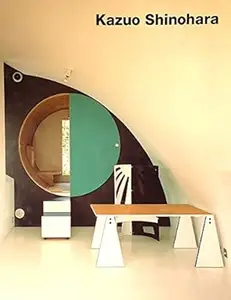
Free Download Axel Menges, "Kazuo Shinohara: Works and Projects"
English | ISBN: 343302264X | 1995 | 144 pages | PDF | 117 MB
Kazuo Shinohara is one of Japan's leading architects. Since his career began, in the 50s, he has designed over 30 residential buildings. More recently he has turned to museums and other public institutions. His early work is clearly linked to Japanese tradition. This is particularly clear in his concept of space and in the integration of symbolic elements, such as the free-standing column in the House in White in Tokyo, 1966. In the 70s he increasingly tried to avoid traditional Japanese building forms. Circles, squares and rectangles, combined in any number of ways, are now the dominant feature of his buildings. Machines, anarchy, chaos and vitality have become the central concepts in his theory. For him machines represent a physical system in which objects are related functionally, as in the Centennial Hall for the Technical University of Tokyo, which, with its raised half-cylinder in the interior, steel braces and diagnonally divided wall areas, is like a giant machine or a fantastic space ship. Individual elements are combined arbitrarily and apparently illogically, providing a visual correlative to the chaos, anarchy and vitality of the city that the building faces, plunging into its total lack of planning. This work contains an essay introducing Japanese architecture and giving a critical appraisal of the architects's work. Shinohara puts his philosophical viewpoint in other essays, in his characteristically forceful language.
